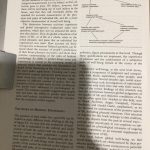ページコンテンツ
人々の幸せとは? 社会学的から生物学まで
人々の幸福はどこからくるのか、喜びから、悲しみまでを社会的、生物学的、また現象的側面に沿って主観的な幸福の研究における最新の動向をまとめたものです。主要な部分は心理学において行われた研究の大部分の論文集となっています。

Contents
Acknowledgments
Preface
PART I How Can WE KNOW Who Is HAPPY? CONCEPTUAL AND METHODOLOGICAL ISSUES
1 Objective Happiness
Daniel Kahneman
2 Ecological Momentary Assessment
Arthur A. Stone, Saul S. Shiffman, Marten W. De Vries
3 Measurement Issues in Emotion
Research Randy J. Larsen and Barbara L. Fredrickson
4 Reports of Subjective Well-Being:
Judgmental Processes and Their Methodological Implications Norbert Schwarz and Fritz Strack
5 Wouldn’t It Be Nice? Predicting
Future Feelings George Loewenstein and David Schkade
PART II FEELING GOOD OR BAD: PLEASURES AND PAINS; MOODS AND EMOTIONS
6 Preadaptation and the Puzzles and
Properties of Pleasure Paul Rozin
7 On the Pleasures of the Mind
Michael Kubovy
8 Questions Concerning Pain
Eric Eich, Ian A. Brodkin, John L. Reeves, and Anuradha F. Chawla
9 The Mood System
William N. Morris
10 Emotions and Hedonic Experience
Nico H. Frijda
PART III PERSONALITY AND INDIVIDUAL DIFFERENCES
11 Personality and Subjective
Well-Being
Ed Diener and Richard E. Lucas
12 Life Task Participation and
Well-Being: The Importance of Taking Part in Daily Life Nancy Cantor and
Catherine A. Sanderson
13 Self-Regulation and Quality of Life:
Emotional and Non-Emotional Life Experiences E. Tory Higgins, Heidi Grant, and
James Shah
14 Disturbances in Emotion
Howard Berenbaum, Chitra Raghavan, Huymb-New Le,
Laura Vernon, and Jose Gomez
15 Personal Control and Well-Being
Christopher Peterson
16 Hedonic Adaptation
Shane Frederick and
George Loewenstein
17 Gender Differences in Well-Being
Susan Nolen-Hoeksema and Cheryl L. Rusting
PART IV THE SOCIAL CONTEXT
18 Causes and Correlates of Happiness
Michael Argyle
19 Close Relationships and Quality of
Life
David G. Myers
20 Well-Being and the Workplace
Peter Warr
21 The Measurement of Welfare and
Well-Being: The Leyden Approach Bernard M. S. van Praag and Paul Frijters
22 National Differences in Subjective
Well-Being Ed Diener and Eunkook Mark Suh
PART V BIOLOGICAL PERSPECTIVES
23 The Physiology and Pathophysiology
of Unhappiness
Robert M. Sapolsky
24 The Psychophysiology of Utility
Appraisals Tiffany A. Ito and John T. Cacioppo
25 Can Neurobiology Tell Us
Anything About Human Feelings Joseph Le Doux and Jorge Armony
26 On the Neural Computation of
Utility: Implications from Studies of Brain Stimulation Reward
Peter Shizgal
27 Pleasure, Pain, Desire, and Dread:
Hidden Core Processes of Emotion
Kent C. Berridge
28 Neural Systems for Reinforcement
and Inhibition of Behavior: Relevance to Eating, Addiction, and Depression Bartley G. Hoebel, Pedro V. Rada, Gregory P. Mark, and Emmanuel N. Pothos
Contributors
Index
Acknowledgments
WE ARE GRATEFUL to the Russell Sage Foundation and to its president, Dr. Eric Wanner, for their exceptionally generous support of this project. The foundation supported the conference at which draft versions of the chapters were presented. Its support in the preparation of manuscripts and the collection of reviews of individual chapters also greatly helped us in our editorial task. The support of the foundation was based on the hope that this volume would promote the integration of diverse strands of research in the study of enjoyment and well-being and make the results of this research accessible to social scientists and ultimately to students and policymakers. We can only hope that the foundation’s expectations will be met.
The able staff of the Woodrow Wilson School of Public and International Affairs at Princeton University took responsibility for the administration of the conference. We appreciate their help.
The Langfeld Fund of the Department of Psychology at Princeton University supported an ini-tial workshop on issues of well-being, which led directly to the planning of this volume.
Kris Eaton at the University of Illinois carried out the difficult task of assembling the volume, with great organizational skill, unfailing good cheer, and considerable patience for the weaknesses of authors and editors.
We wish to thank the following individuals who provided insightful reviews and suggestions to chapter authors: Julian Barling, Jonathan Brown, Charles Carver, Margaret Clark, Martin Daly, Paul DiMaggio, Robert Emmons, Randy Gallistel, Ian Gotlib, Richard Gracely, Jerome Kagan, Richard Koestner, George Koob, Joseph LeDoux, George Loewenstein, Colin Martindale, Sandra Murray, Randolph Nesse, Jerry Parrott, Ira Roseman, Ruut Veenhoven, David Watson, Timothy Wilson, Hans Wittchen, and Albert Wu.
DANIEL KAHNEMAN
ED DIENER
NORBERT SCHWARZ
Preface
Daniel Kahneman, Ed Diener, and Norbert Schwarz
OUR AIM IN editing this book was not at all modest: we hoped to announce the existence of a new field of psychology. Hedonic psychology—that could be its name-is the study of what makes experiences and life pleasant or unpleasant. It is concerned with feelings of pleasure and pain, of interest and boredom, of joy and sorrow, and of satisfaction and dissatisfaction.
It is also concerned with the whole range of circumstances, from the biological to the societal, that occasion suffering and enjoyment. Although the adjective “hedonic” is often used to refer solely to pleasure, hedonic psychology covers the full spectrum from the pleasant to the unpleasant, consistent with a definition of “hedonics” in Webster’s New Universal Unabridged Dictionary, (1989) as a “branch of psychology that deals with pleasurable and unpleasurable states of consciousness.” We apply the term even more broadly, to include levels of psychological analysis other than states of consciousness.
Enjoyment and suffering have attracted far less systematic research than many other psychological functions, such as attention or memory. The neglect of hedonics is obvious in the index sections of introductory textbooks: there are a few pages about pain, a mention of pleasure centers and the pleasure principle, but little else. There are typically no entries at all for happiness or well-being. This pattern does not reflect the importance of the topics in people’s lives, but it does reflect the history of the dominant themes of modern psychology.
First there was behaviorism, then there was the cognitive revolution, and the study of hedonics could not thrive under either of these intellectual regimes. Feelings were explicitly rejected as a legitimate object of study in the behavioristic philosophy of science, and they were of little interest in the information processing approach. Research on hedonics never actually ceased, but its results could not be elegantly described in the dominant theoretical language of the day.
As a consequence, this research was relegated to peripheral regions, where small communities of investigators focused on different aspects of hedonics and developed separate dialects in which to speak about their particular problems. Students of the pleasures of food and of the pains of arthritis have had no common framework and little to say to each other, students of mood and well-being did not appear to be aware of the mutual relevance of their work, and the physiology and psychology of hedonic states were studied separately.
Another characteristic of past research is the remarkable accentuation of the negative. Textbooks that do not mention pleasure or well-being at all devote many pages to the clinical phenomena of anxiety and depression. This negative focus is due to many causes; the eternal fascination with the abnormal and the professional concerns of clinical psychologists are certainly part of the story. It is also relevant that the determinants of negative affective states are often associated with considerable urgency, and that the physiological and behavioral manifestations of these states are often obvious and dramatic; for these and other reasons, pain avoidance provides explanations of behavior that are often more compelling than explanations in terms of pleasure-seeking.
Our aim is to bring these threads together to facilitate an integrative view of hedonic experiences in all their instantiations. The hedonic psychology of the future, as we imagine it, will analyze the full range of evaluative experience, from sensory pleasure to creative ecstasy, from fleeting anxiety to long-term depression, from misery to joy. It will also address the determinants of these experiences, from the genetic to the societal, and from the biochemical to the cultural.
Researchers will inevitably specialize, but they will be aware of their place in the broader picture and alert to the possibility of instructive parallels between phenomena in different domains.
We have tried to anticipate future developments by featuring some new approaches and by emphasizing some distinctions that have often been blurred in past research. The new approaches we feature involve the collection of measures of hedonic experiences over time rather than total reliance on global retrospective evaluations, based on the memory of past experiences.
The study of on-line measures of experience and real-time physiological measurements is in its infancy as this collection goes to press. We believe, however, that there will be increasing use of such indices in the future, and that they will eventually define the standard for accurate measurement of the pleasures and pains of individual life, and for a more objective measurement of overall well-being.
The distinction between real-time experience and global retrospective evaluations raises new questions, which have not yet attracted the attention they deserve. How do global evaluations of an aspect of life, or of life as a whole, relate to the actual pleasures and pains that an individual has experienced over time? How accurate are these retrospective evaluations? Related questions can be raised about the accuracy of people’s predictions of their future pleasures and pains, and about their intuitive understanding of the rules of hedonic psychology.
An ability to predict future tastes and experiences is central to the economic model of rational choice that provides the foundation for much of the theorizing in the social sciences and for many policy applications. Pursuing one’s own self-interest requires appropriate predictions of the likely short-term and long-term hedonic consequences of different courses of action, but the question of how people arrive at these predictions has hardly been addressed in psychological research. The evidence available suggests that people may not have the ability to predict their future tastes and hedonic experiences with the accuracy that the economic model requires.
THE SCOPE OF HEDONIC PSYCHOLOGY
The question of what makes for a good life can be studied at many different levels. Starting at the top of figure P.1, we note that any evaluation of quality of life is embedded in the cultural and social context of both the subject and the evaluator. Alternative views of what constitutes a good life must be part of the analysis. In particular, the serious student of well-being soon discovers that quality of life cannot be reduced to the balance of pleasure and pain, or to assessments of subjective life-satisfaction; other values contribute to the judgment. Moreover, objective characteristics of a society, like poverty, infant mortality, crime rate, or FIGURE P.1 Levels in the Analysis of the Quality of Life

pollution, figure prominently at this level. Though these qualifications are important, the experience of pleasure and the achievement of a subjective sense of well-being remain at the center of the story.
Subjective well-being, at the next level down, involves a component of judgment and comparisons with ideals, aspirations, other people, and one’s own past. Several decades ago, social scientists began large-scale investigations of individuals’ satisfaction with their lives and with their society.
One of the robust findings of this research was that the correlations between global judgments of the quality of life and objective conditions of living are often quite low. Leaders in this field, such as Frank Andrews, Angus Campbell, Norman Bradburn, and Gerald Gurin, emphasized, as we do, the need for assessments of the positive aspects of life, including pleasant emotions. Our selection of chapters for this book belongs to this tradition, but it also departs from the past in several waysperhaps most importantly in our emphasis on subjective and on physiological measures of ongoing hedonic experience as an essential supplement to global judgments of life.
One level below global well-being we find mood states, which are characterized by their persistence and by their loose connection to particular events. There are large individual differences in people’s characteristic mood, which clearly should be assigned substantial weight in assessing their well-being. Next we encounter affective states that are more closely related to the current situation.
These include the many varieties of pleasures and pains, and transient emotional states. Each of these affective responses has multiple aspects beyond the subjective experience of the moment: there is a cognitive coding of the present, and a retrospective coding of past affect; there are both transient physiological and chemical changes and permanent adaptations.
The next level of reduction involves neural systems and the biochemistry of hormones and neurotransmitters that regulate the motivational systems with which affective responses at all levels are associated. One of the important lessons of recent years is that the physiological and biochemical levels of analysis are characterized by the prevalence of opponent systems and complex feedback loops, with effects that often appear paradoxical, such as the familiar “runner’s high.” And it is probably at these levels that the main keys to the understanding of addictions, anhedonia, and depression will be found.
This overview of levels of analysis suggests that an understanding of the higher levels will often require careful consideration of lower ones. However, there are also important influences that travel the other way. Among the most dramatic are the almost complete suppression of pain in some war wounded and in some states of exaltation and the well-documented effects of mental states on physiological responses. We hope that collecting treatments of the different levels of analysis in a single volume will contribute to research that traces the connections between these levels. Equally important, it may contribute to an understanding of questions that arise at several levels, and may have related answers in all.
One such question is the nature of the relation between positive and negative affect: is this a single bipolar dimension, where factors that produce one kind of affect can cancel the effects of factors that operate in the opposite direction? Or should we understand positive and negative affect as separate attributes of experience? This question can be raised at the level of self-reported affect, but it can also be raised at the biochemical levels, where pleasure and pain appear to be mediated by different neurotransmitters.
A related multi-level question concerns the apparent asymmetry between the relative potencies of pain and pleasure. In the context of decision research, the overweighing of negative consequences has been called loss aversion; does this phenomenon have a counterpart at the various levels of hedonic experience? Another general question concerns adaptation. This label has sometimes been applied to negative feedback loops in the intracellular environment, and it has also been used to explain why the mean level of satisfaction with income hardly changed over a fifteen-year period in which mean income nearly doubled.
Are there important commonalities in adaptation processes at different levels? Are there general characteristics of stimuli to which adaptation is easy or rapid? We believe that the pursuit of cross-level analogies is likely to yield useful hypotheses for future research, and we hope that bringing together discussions of these levels under a single cover will advance that process.
Cross-cutting this organization by levels of analysis, there is an organization by causes and contexts. It is useful to know the circumstances under which people are most likely to experience wellbeing or misery.
For example, what is to be made of the finding that people experience many of their happiest moments in the presence of friends, whereas more intimate family relations are often loaded with substantial ambivalence? And what is the impact of insecurity about the future (for example, for people with no health insurance) on well-being? Issues like these have rarely been addressed in psychological research, but their investigation is likely to contribute to our basic understanding of hedonic experience as well as to psychology’s relevance to society.
POLICY RELEVANCE
Our hope is that hedonic psychology will be relevant to policy. We recognize, with a large degree of humility, that scientific understanding in this field is currently woefully inadequate to provide a strong underpinning for national policies. We believe, however, that in the decades to come there will be much greater success in understanding hedonics, and that principles will emerge that can be used by policy makers. We are particularly hopeful that a scientific understanding of hedonic experience will allow for the development of valid hedonic indicators that reflect the pleasantness of life in the everyday experiences of people. At present, economic indicators hold the most sway in policy circles.
Yet, the economic approach is limited in several ways. First, it focuses on those aspects of life that can be traded in the marketplace. Thus, desirable goods such as love, mental challenge, and stress are given little consideration. As people reach what Ronald Inglehart has labeled a “postmaterialist” level in which basic physical needs are met, they become increasingly concerned with fulfillment in less materialistic realms. Second, the economic view presupposes that individuals will choose the greatest amount of utility for themselves; yet a great deal of evidence now contradicts this proposition. Third, economics assesses variables that are only indirect indicators of something else-of subjective fulfillment.
What is not known is whether people are becoming happier or less happy, and in what situations people experience the most enduring pleasures. To this end, we propose that nations should begin monitoring pleasure and pain through on-line experience recording among samples of respondents to complement existing social indicators, and to provide a more direct assessment of the final outcome about which people are most concerned.
Fortunately, there have already been major advances in the field of hedonic psychology. The neural areas related to pleasure, pain, and to specific emotions are understood with increasing clarity, as are the hormonal underpinnings of hedonic phenomena. Scientists are accumulating increasi knowledge of affect-of mood and emot promises to shed light on the long-term ası pleasant experience. We are beginning to u stand factors such as adaptation that can stron influence pleasurable and unpleasurable feelings and the personality correlates of pleasant experi’ ences are receiving increasing empirical attention
Thus, despite our relatively modest degree of understanding, progress in the science of hedonics has been made in the last several decades.
The following chapters present overviews of the knowledge accumulated thus far about hedonics. Our advice to authors was to make the chapters accessible to educated lay readers. Our selection of topics was based on the idea that hedonics can be understood well only through an approach that brings together understanding at all levels of analysis. Although there are several glaring omissions in the book, we believe that most important topics are covered. And we hope that reading this volume will bring to each reader a degree of pleasure.













